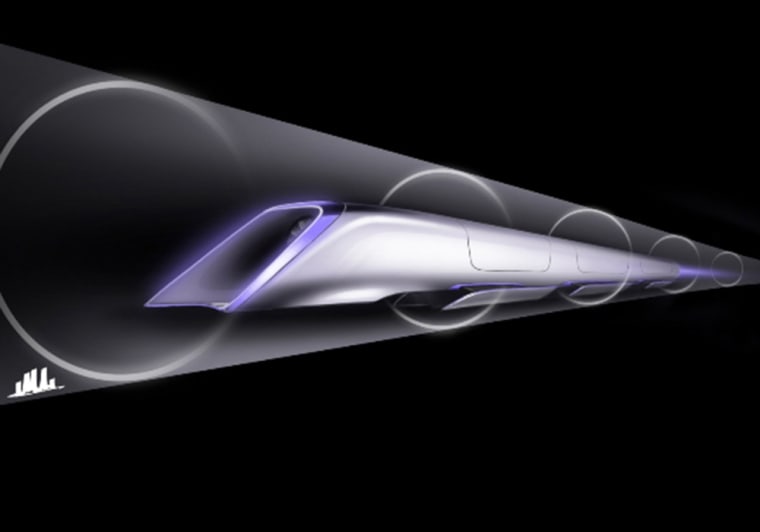Prototypes of Elon Musk's high-speed "Hyperloop" transit will be ready by 2015, according to the group taking over development of the project. That's just two years after Musk first described his idea to transport humans between cities in pods accelerated to near-supersonic speeds.
A newly created company, "Hyperloop Transportation Technologies," will lead the charge, its team leaders announced Thursday. They also published a project timeline for the next two years.
Piloting the ship are Marco Villa, an ex-SpaceX man, and Patricia Galloway, who has served as CEO of a management consulting firm, presided over the American Society of Civil Engineers,and sat a term on the National Science Board under President George W. Bush. They are backed by JumpStarterFund, sort of a Kickstarter for startups, based in California.
While the leadership of the company has been appointed in August 2013, the ranks have yet to be filled out. More than 160 aspiring Hyperloopers have turned in applications from the U.S., Europe, and Asia. They will receive stock options for contributing part-time or full-time work.
"Our goal is by the end of 2015, [to have] one of more prototypes available," Marco Villa told NBC News. "There are certain [concerns] you can only retire after doing testing," he explained, and a wind-tunnel model, a life-scale version, and a prototype that's smaller than the real deal can be expected.
When Musk first floated the idea of the supersonic rail in August, researches and engineers cited several challenges: the train cars could overheat, passengers may be flipped over, it is a challenge to maintain a near-complete vacuum chamber for the train cars spanning hundreds of miles, would the system be earthquake-proof?
But this team is confident it will work. "We couldn’t identify anything that cannot be solved or cannot be tackled," Villa said of Musk's proposal. "We really look forward to start asking the tough questions."
Galloway compares the scale of the undertaking to other pioneering ventures, such as building Concorde supersonic jet, or two of Musk's other undertakings: Tesla and SpaceX.
"People said they couldn’t be done and they were done," she told NBC News, and yet they were. "The difference here is the conceptualization of the design and the vetting of the design will be done by the crowd," she said.
But the two acknowledge there is a steep road ahead. For one, it's not enough that the Hyperloop is built, it must be affordable to use, Villa said: "Cost must be paramount."
Galloway has other hurdles in her sights: convincing government that the project is worthy one to support. "When you're competing against projects like the hight speed rail line, our challenge will be to explain to them how this is cost saving, how it will move people in a more efficient manner," she said.
Hyperloop Transportation Technologies is also announcing partnerships with Ansys, which created some of the first software simulations of the rail, GloCal, a company that will help source materials and parts, and SUPRASTUDIO, a design program at UCLA.
According to the roadmap, the project will see liftoff by November this year. By March 30 2014, the group will release a roadmap that will demonstrate, theoretically, that the train will work.
The question is: Will too many cooks get in the way?
More about the Hyperloop:
- Hyperloop revealed: Elon Musk foresees rapid transit in a tube
- Why the Hyperloop transit system is far from a sure thing for Elon Musk
- Hyperloop sounds crazy ... but simulation says it just might work
Nidhi Subbaraman writes about technology and science. You can follow her on Facebook, Twitter and Google+.
